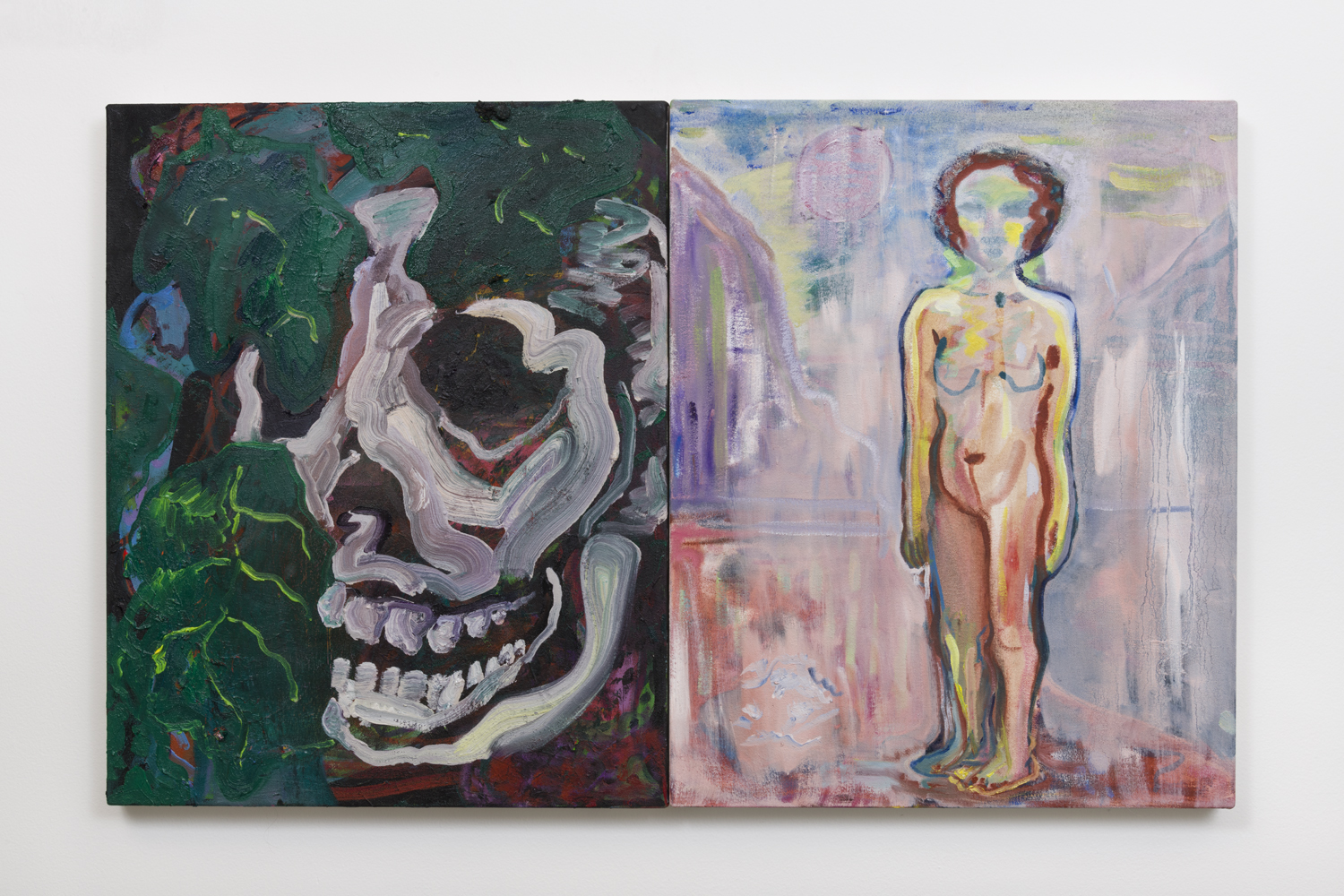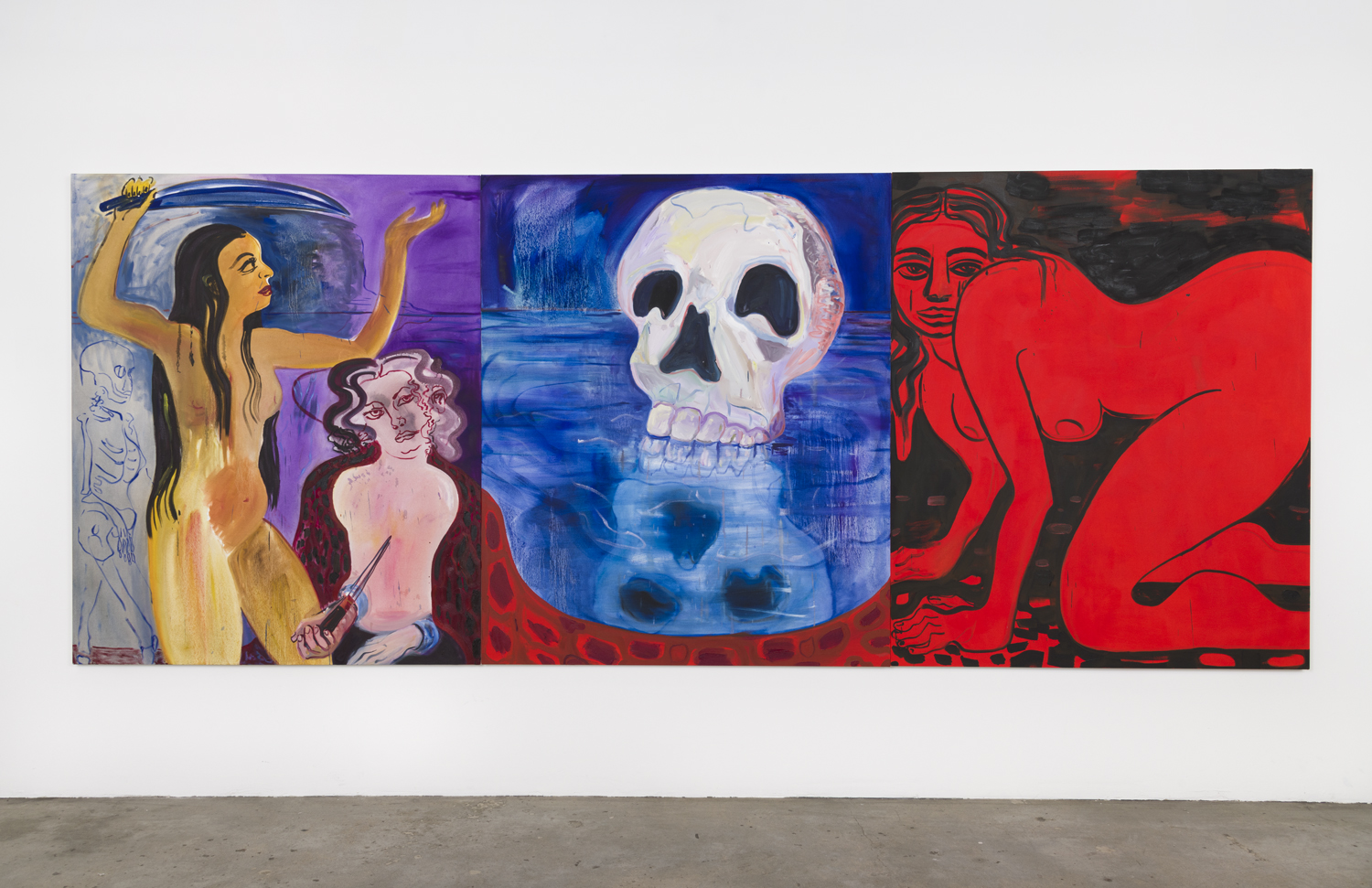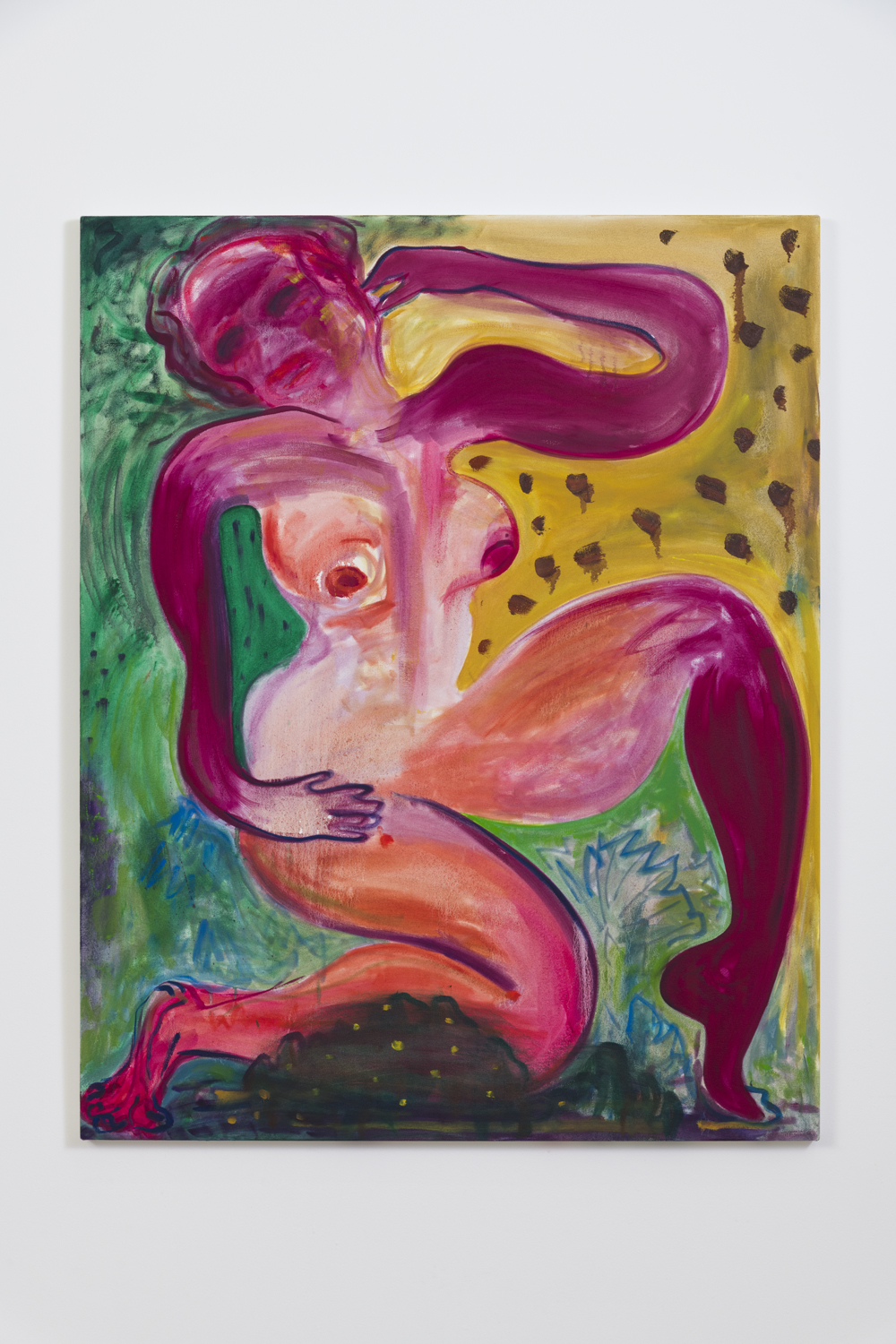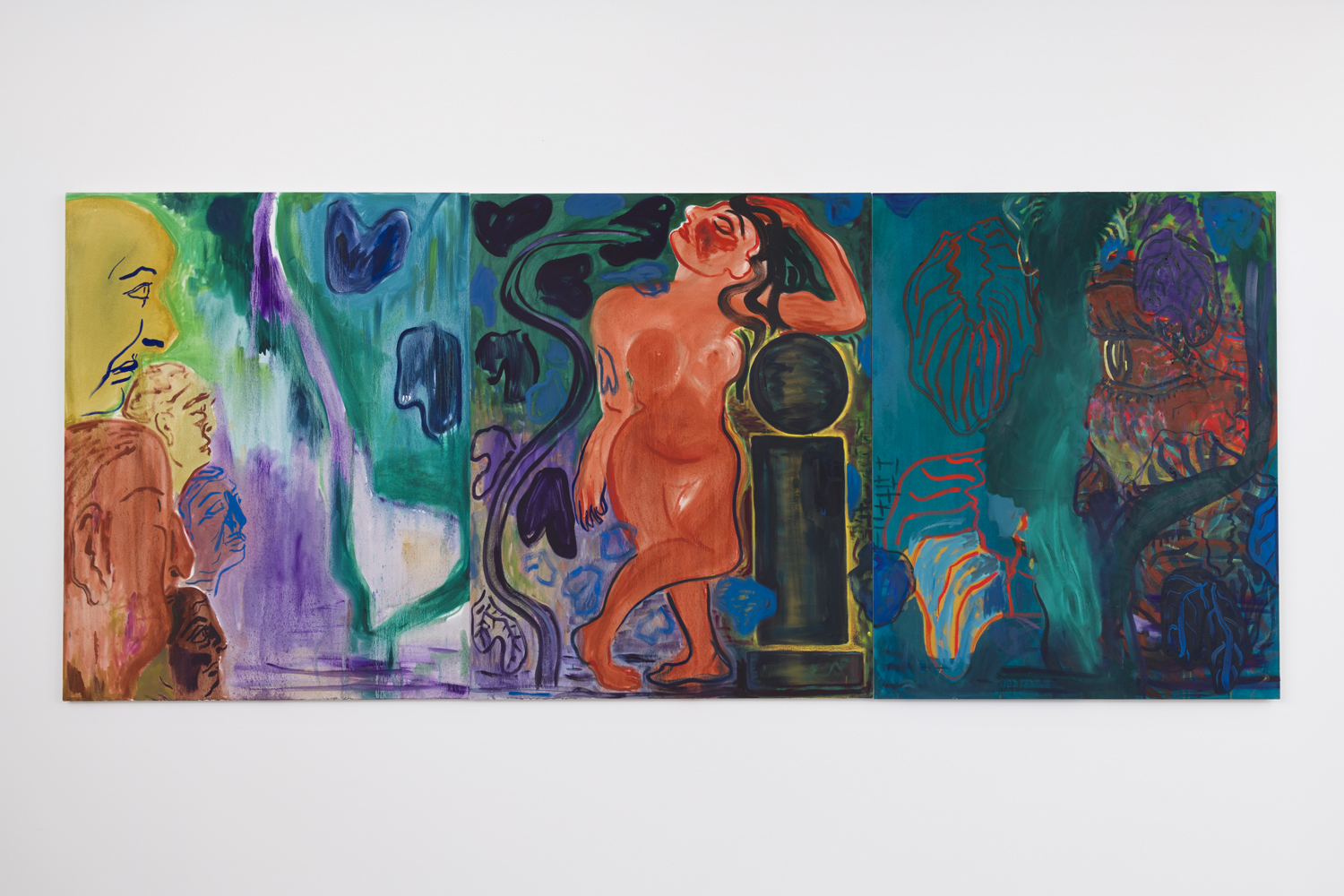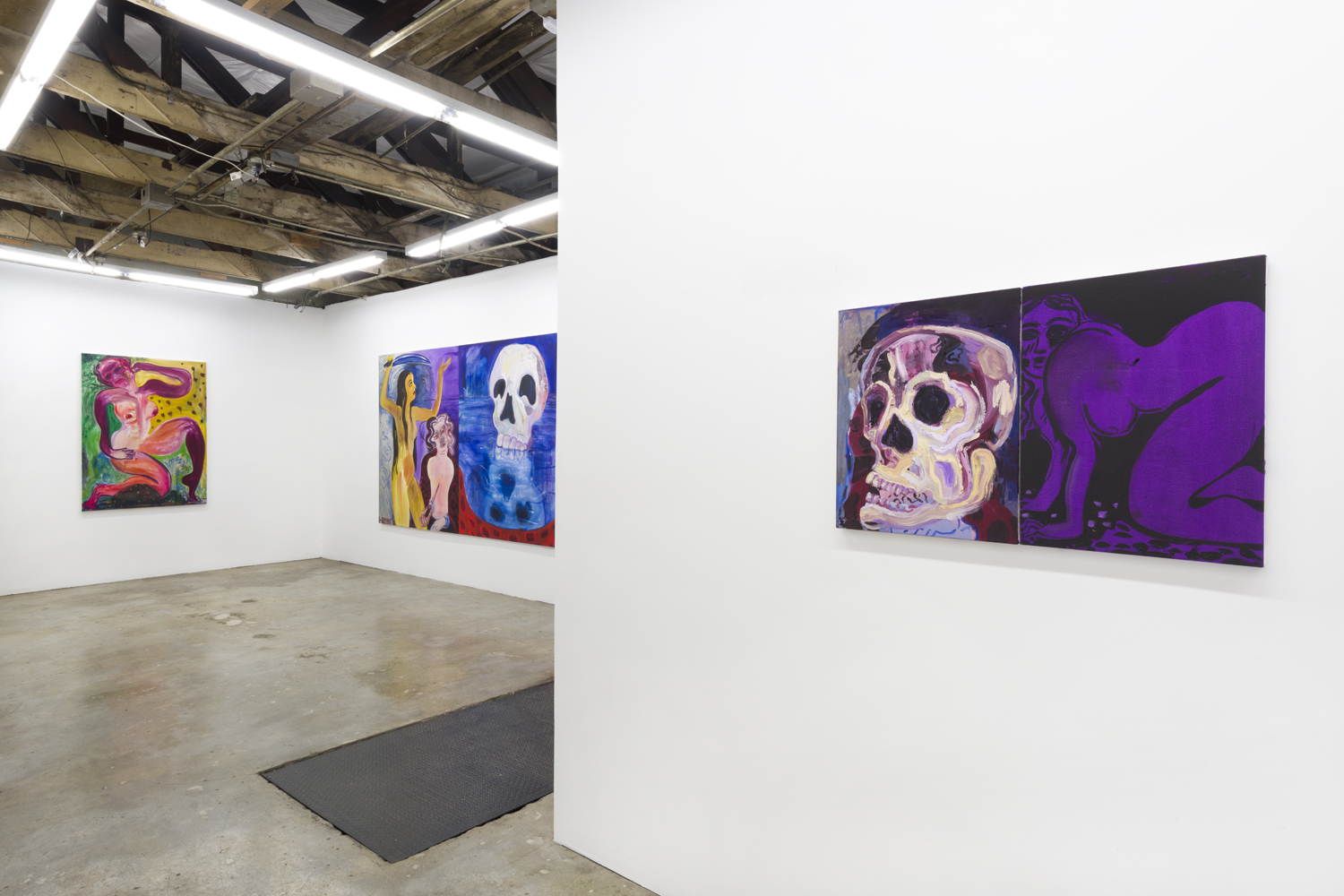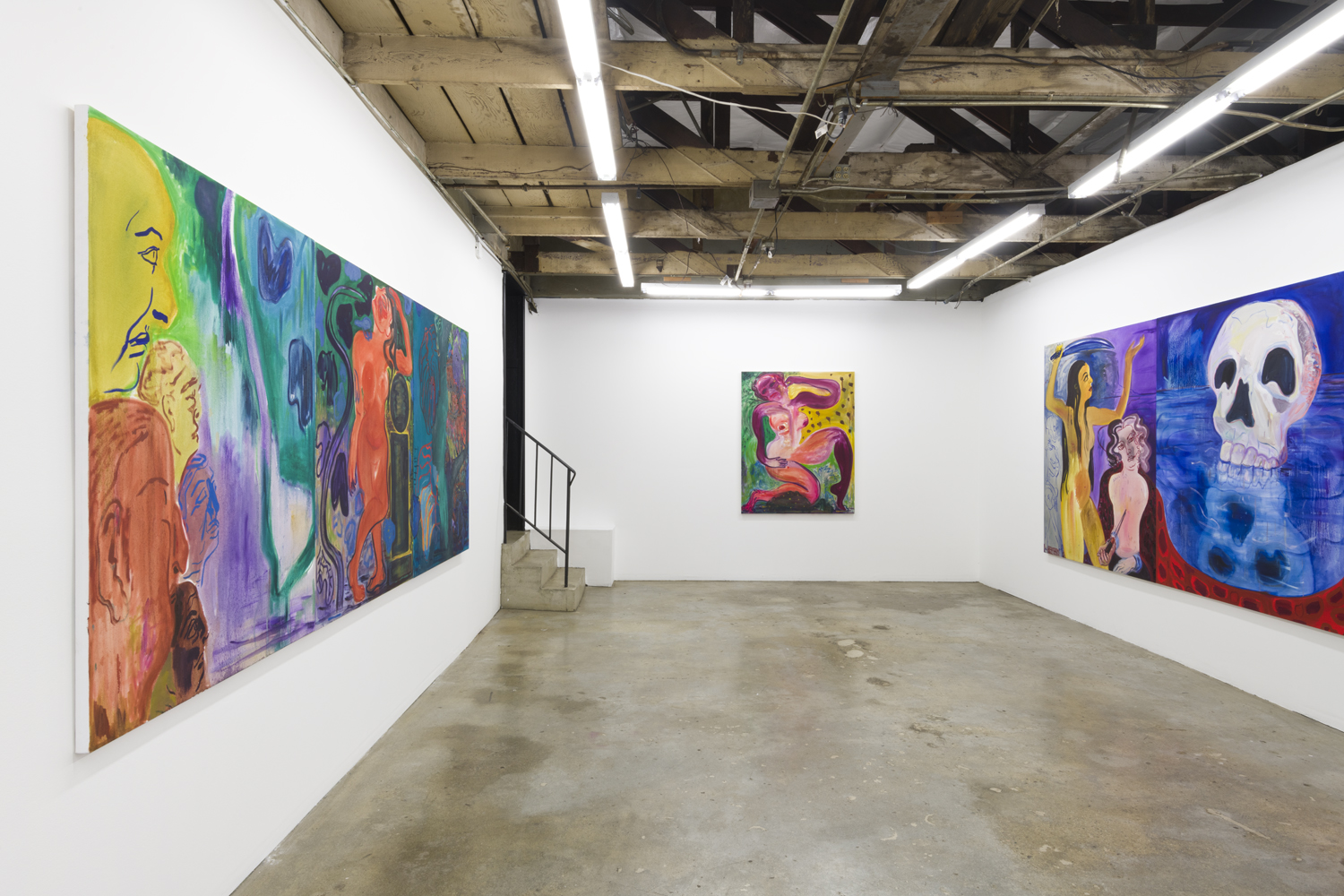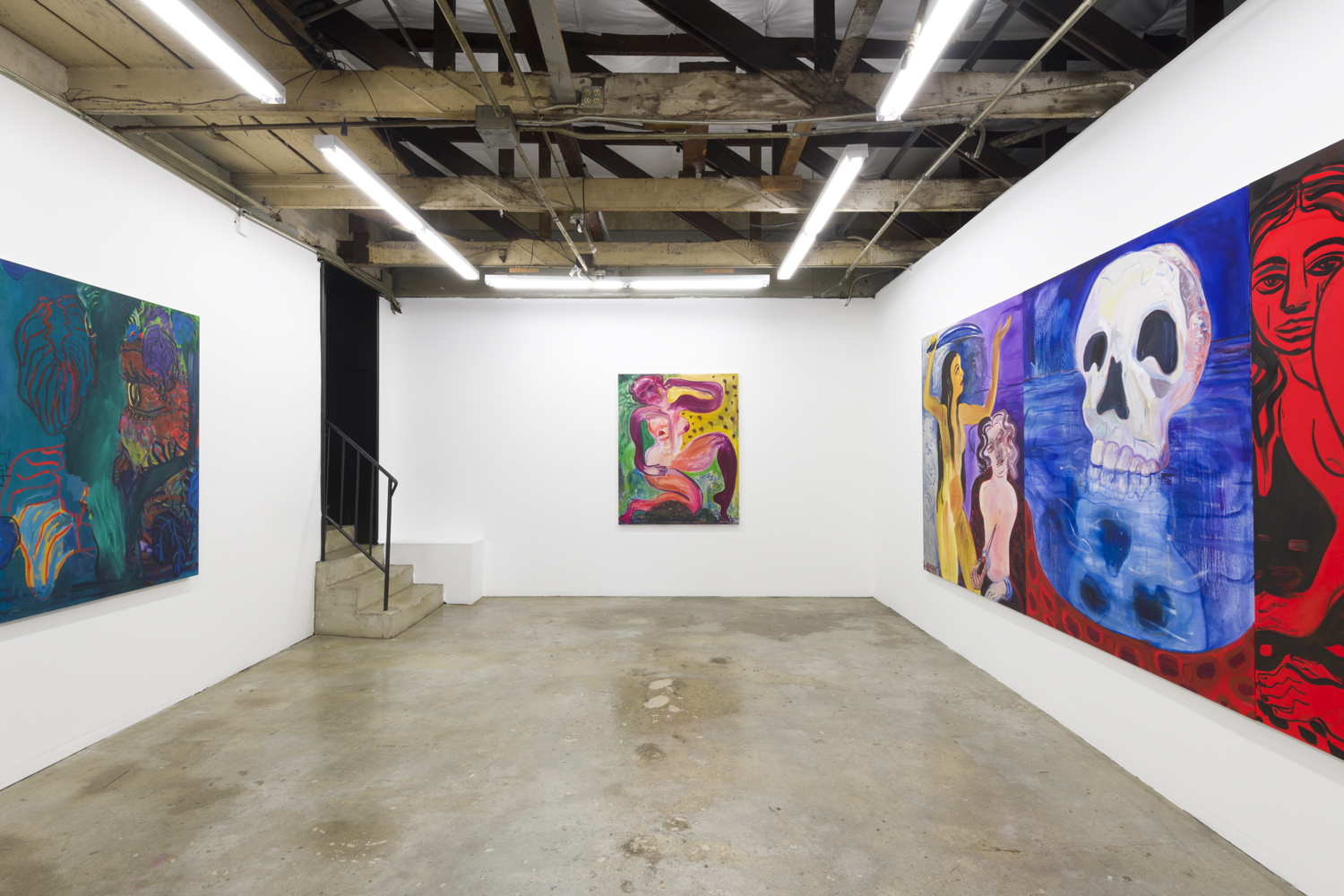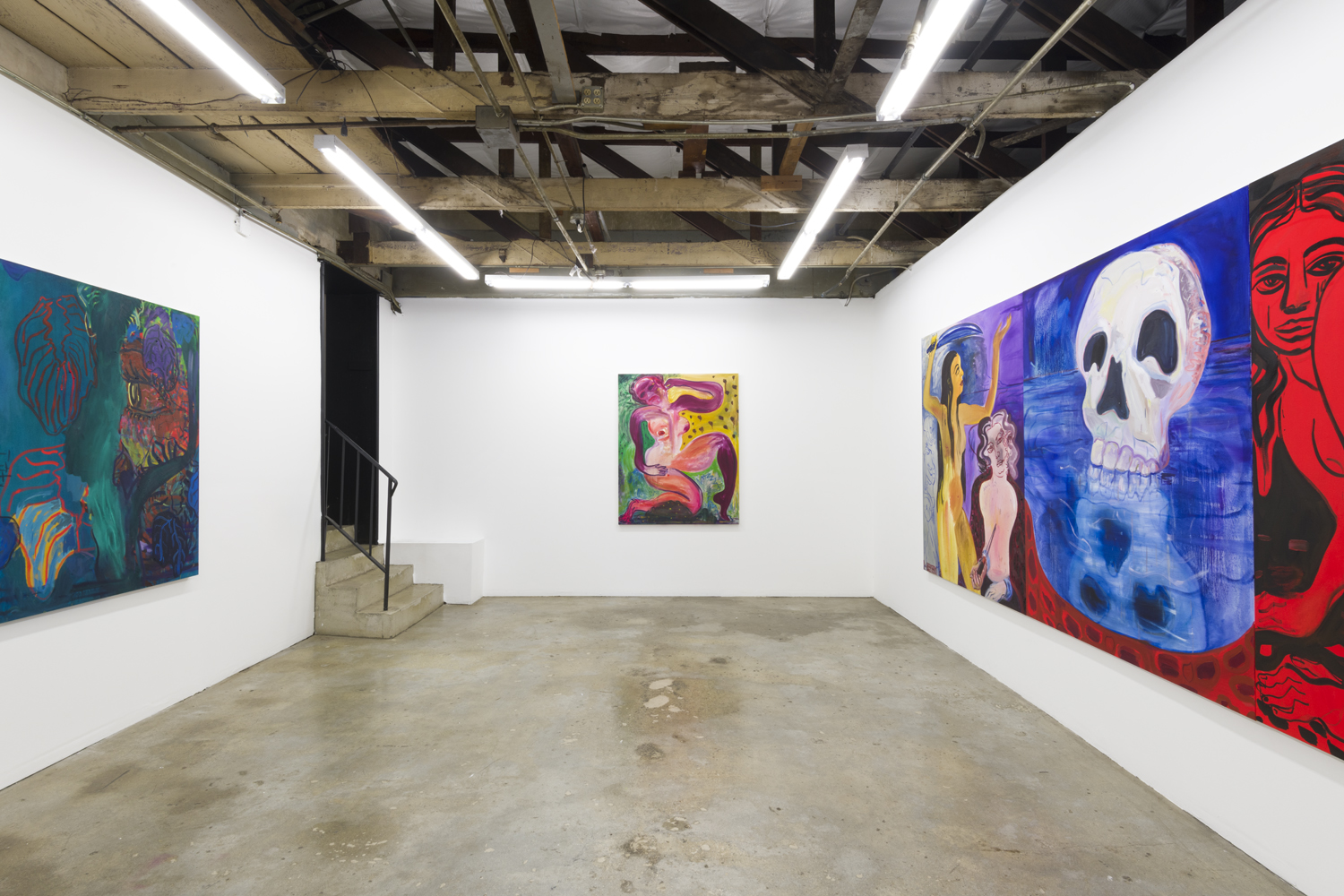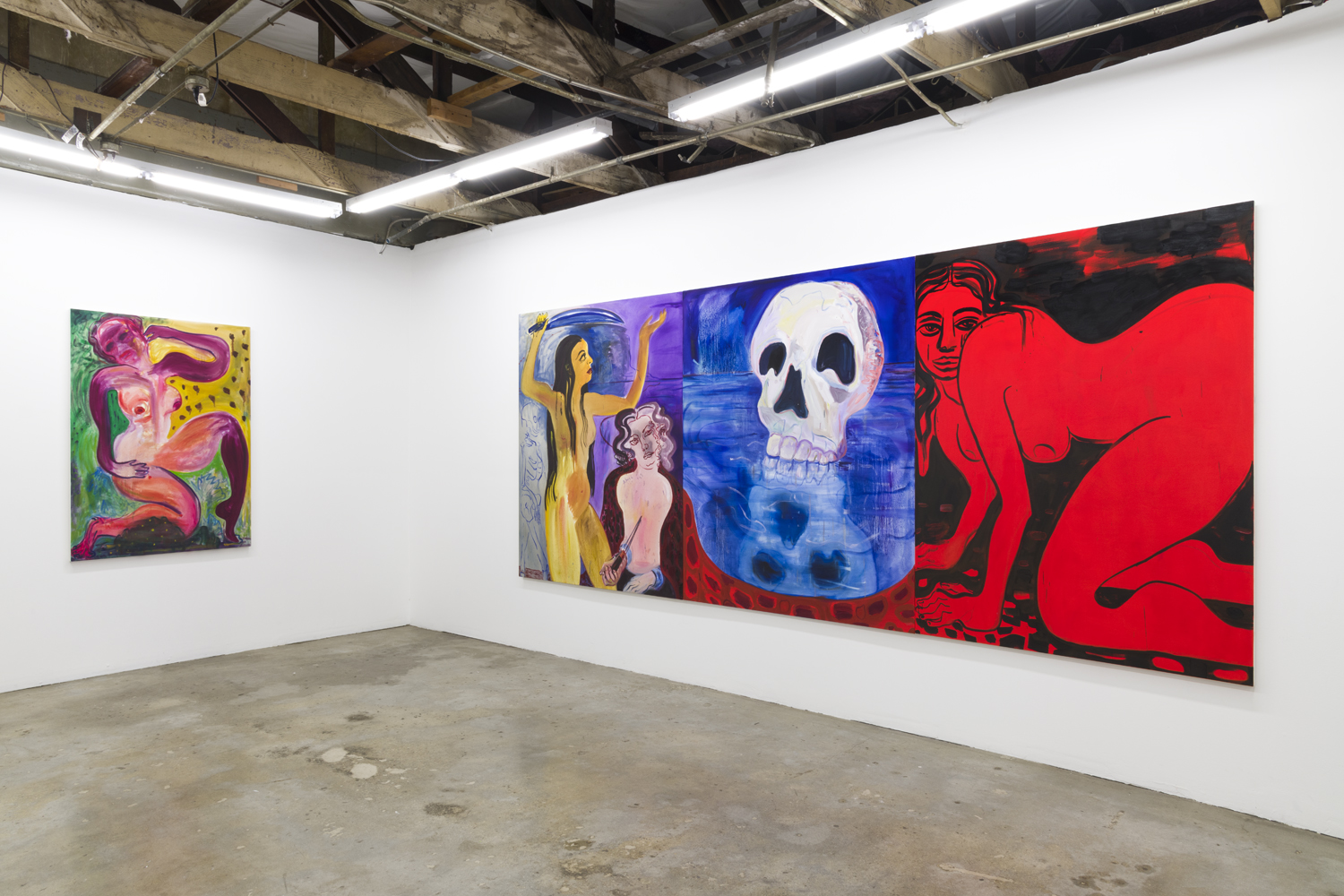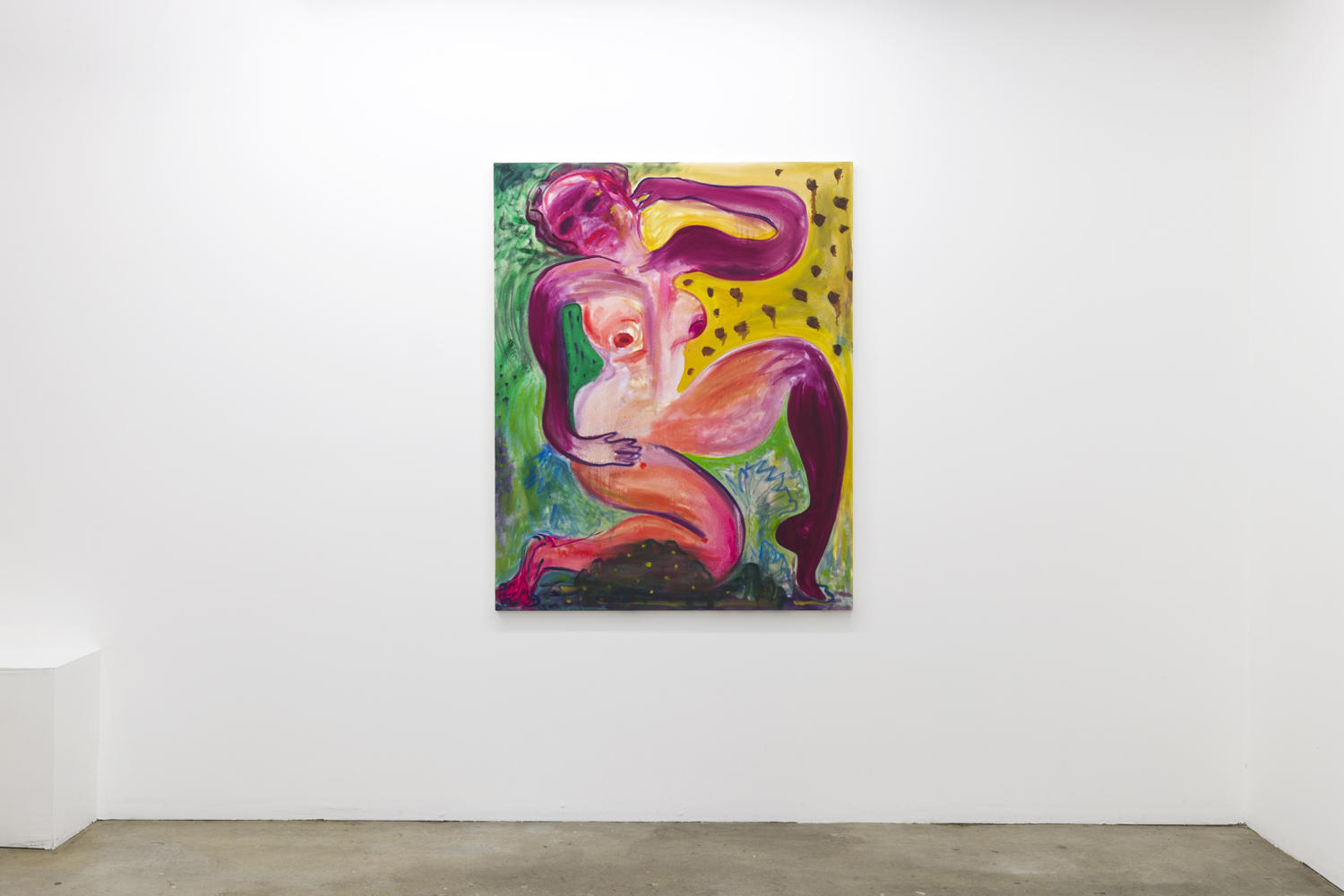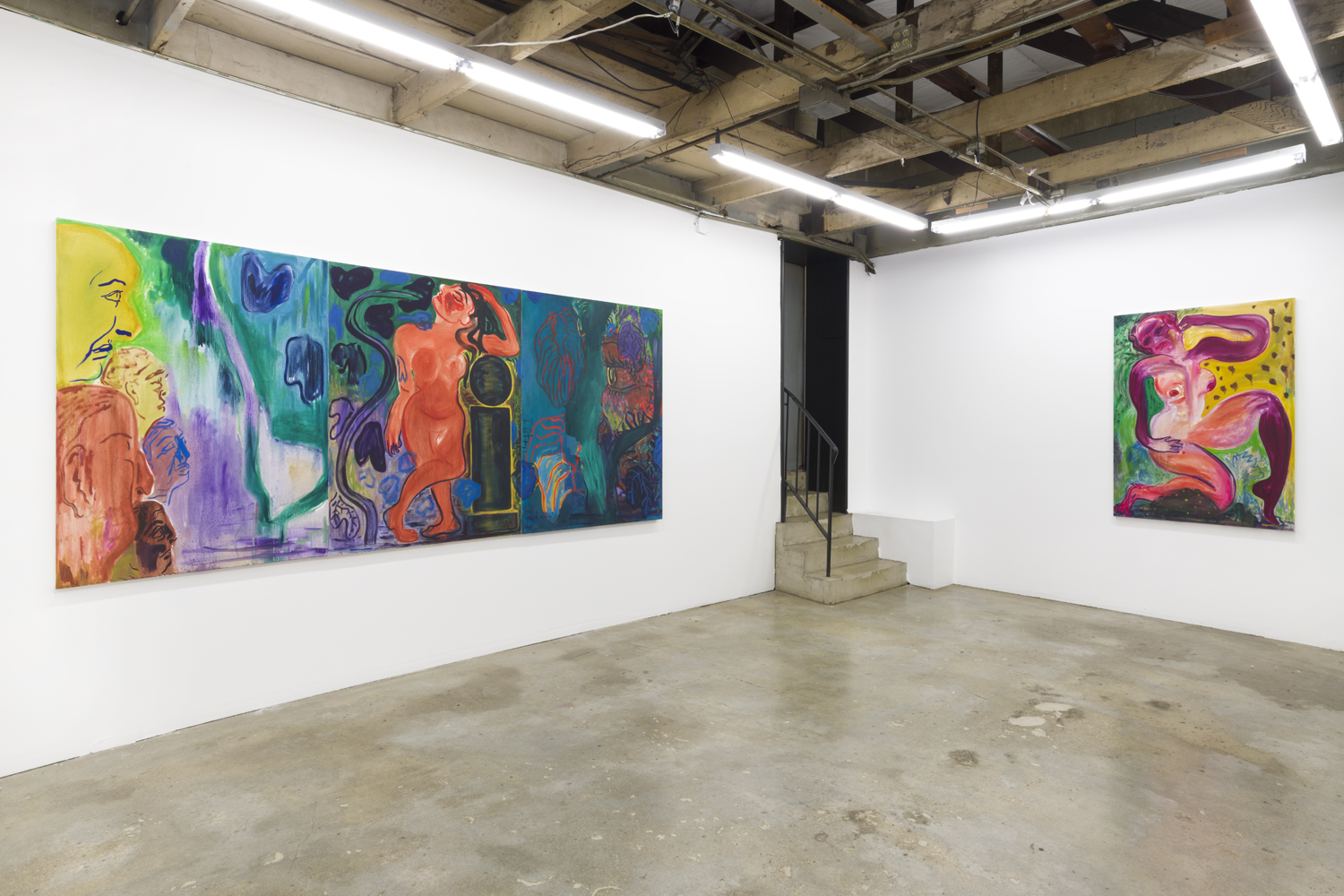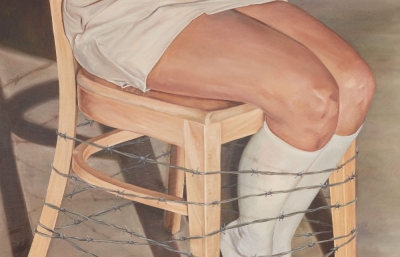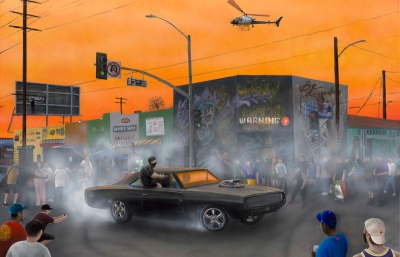This past March and just closing this past weekend in Los Angeles, The Pit presented Reclamation Island, a solo exhibition by Los Angeles based Amy Bessone.
In service to Bessone’s immersive, historically referent triptychs In the Valley of Exes ( 60 x 144 inches) and Weapons were Drawn, Sacrifices were Made, Battles were Waged, Pleasure was Had (72 x 180 inches) is a controlled, elegant installation of four paintings in The Pit gallery. These two large works make-up the crux of the exhibition. In the Valley of Exes is painted with a lush green and blue palette, creating an environmental scape populated by figures. The painting’s expressionistic use of large brush strokes and swathes of color brings to mind artists such as Elvira Bach or Markus Lüpertz. At the same time evoking 20th century French artists such as Dufy, Cocteau, and Picabia through the use of a calligraphic style mark making used in rendering details of the composition. At the center of the work, which flanks the long entrance wall of the gallery, is an unbothered nude female figure. She is gazed upon by gawking male figures on the left panel. From the right panel, a massive singular eyeball, bringing to mind Guston’s cyclopian abstracted archetypal figures, looks out from its hiding place amongst the vegetation.
On the opposing wall is the even larger painting Weapons were Drawn, Sacrifices were Made, Battles were Waged, Pleasure was Had. Unlike its facing neighbor, the three panels in this triptych are more jarringly disparate. The left panel consists of three figures; two women holding blades and a skeleton. The central panel focuses on a large skull springing up like an island from a murky body of water. The right hand panel is painted in a reduced color palette of black and red depicting a naked woman on all fours. They are made singular by their juxtaposition and by transmuting formal elements which travel across the panels.
Bessone’s works in Reclamation Island are historical, referential, and symbolic. They stand heartily in conversation with and in contrast to the canonized depictions of the female nude. Her subjects find joy, humor, and pride in the tragedy that’s been handed to them and, through this, Bessone is able to carve out her own space in the ongoing story of painting.


